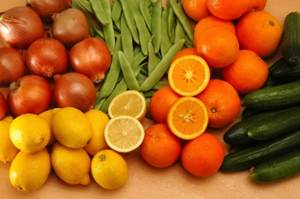Your patients are likely to understand the importance of adding certain vitamins, minerals and other nutrients to their diets to help keep their bodies healthy. However, some may not realize the impact their diet has on the health of their eyes. But as All About Vision recently reported, the results of a new Swedish study revealed that adding more fruits and vegetables to your diet can help reduce the risk of cataracts in women.
The study, conducted by the Institute of Environmental Medicine at the Karolinska Institute, observed over 30,000 women above the age of 49 for almost seven years. They were specifically monitored for signs and symptoms of cataracts and were given a questionnaire so researchers could learn about their individual diets. Rather than singling out antioxidants like vitamins C and E and other nutrients like lycopene, researchers “used a measure of total antioxidant values in foods, which takes into account how nutrients work together.”
Researchers divided the women into five groups ranging from greatest antioxidant intake to least antioxidant intake. Women that took in the most antioxidants faced a risk of developing cataracts that was about 13 percent less than those with the lowest intake of antioxidants, with 745 cases of cataract recorded in the group consuming the most antioxidants. Of the women taking in the least amount of antioxidants, there were 953 cases of cataract recorded.
With this information at hand, it’s a good time to remind both female and male patients to add foods high in antioxidants to their diets. Oranges and other fruits and vegetables, whole grains, and even coffee and red wine are good sources of antioxidants.
A diet high in antioxidants isn’t the only thing your patients need to keep their eyes and vision healthy. Routine comprehensive eye exams that include ultra-widefield retinal imaging are a must as well. Visit the Optos website to learn more about our ultra-widefield retinal imaging devices and how they can benefit your patients and your practice.
